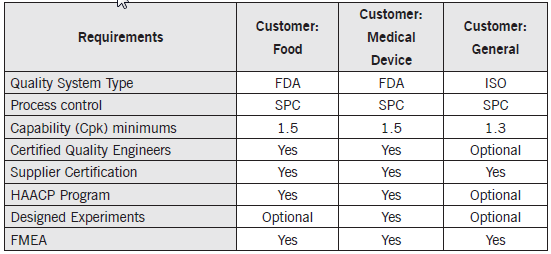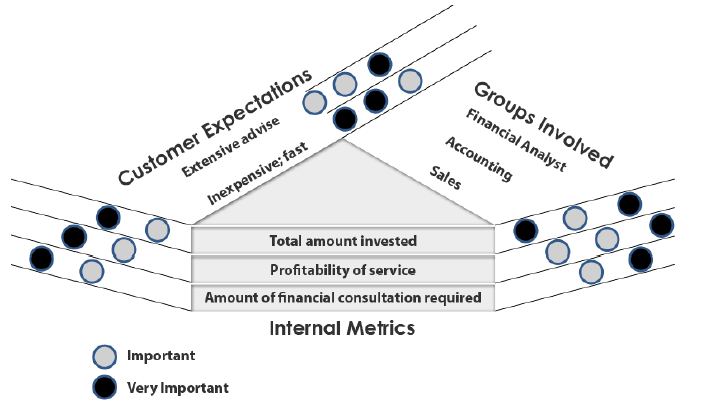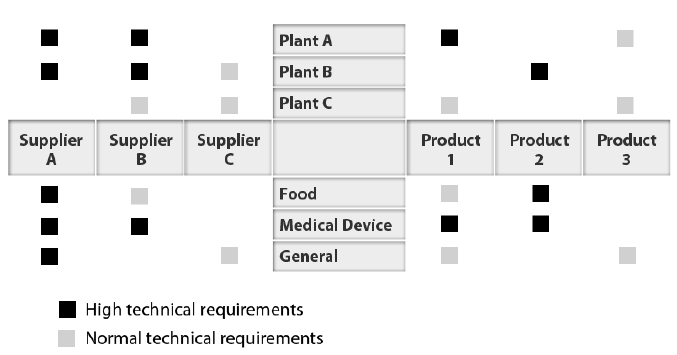A matrix diagram is a tool that illustrates the critical relationships between or among two or more groups. It can be enhanced to show things like the strength of the relationship or the different aspects of the relationship.
Use: Customers have needs and requirements. A customer need establishes the relationship between the organization and the customer. Example. I need an iPad. Requirements are those characteristics that determine whether or not the customer is happy. (Example. The iPad needs to be user-friendly, fast in data storage and retrieval, etc.) There are other requirements such as light-weight, long battery life and so forth.
What we are talking about here though with Six Sigma is things that you can measure on a continuous scale. You can measure user-friendliness on a ‘variable-discrete Likert scale.’ You can measure the download/upload in megabits per second or load times in fractions of seconds. The fact that the iPad is lightweight is just a feature that doesn’t change and it isn’t something that you would really measure to make improvements.
The matrix diagram is a tool that can measure the critical relationships between two or more of these groups. For instance, understanding the relationships between a series of needs relating to a series of requirements that overlap might be of interest to the team. With the matrix diagram, a practitioner can visualize the relationships – all contained in one diagram. Making things visible is a big part of both Six Sigma and Lean and the matrix diagram is one tool that can bring to the forefront relationships of interest.



